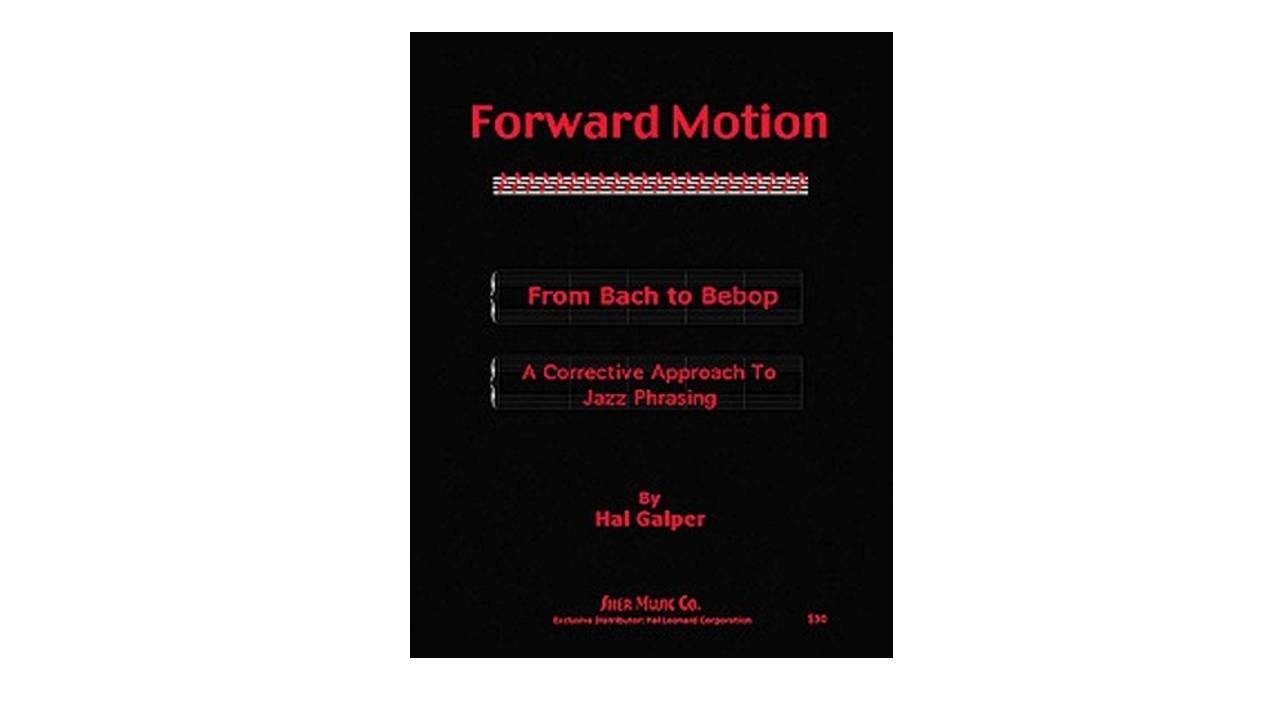
Forward Motion
Nov 14, 2014by Hal Galper
Forward Motion by jazz pianist and educator Hal Galper was another one of these books that completely changed my perspective: it opened my eyes to the true nature of jazz phrasing and articulation. Hal Galper has the knowledge, skills and, most of all, experience to explain what typically lacks in the average jazz player. David Liebman endorsed the product (and wrote a nice foreword by the way!)
This book was written to evolve around two basic ideas that should correct outmoded practice and playing habits: rhythms (phrasing) and, of course hearing. The author refers to it as vivid hearing.
Rhythms
On the rhythmic level, Galper goes all the way back to the music J.S. Bach and demonstrates that articulations in music are part of a universal and timeless concept. That's great! Once you get that, you'll never play the same.
The way Galper discusses articulations and phrasing definitely clarifies rhythms and why they're so significant in jazz. As the subtitle of the book says, most musician should take a corrective approach ... and stop considering beat 1 as a starting point. The nature of musical time & feel clearly requires something else!
Hearing
And on the hearing level, the author states clearly that what is played (or improvised) must be heard deeply inside beforehand. That "vivid hearing" concept is analogous to imagining pictures in your mind, only this time, it's music! Simple, right?
It means that the player IS the instrument because the music is conceived in the player's mind (ears) before the "output" on the actual instrument. The book is filled with practical suggestions to reach that kind of freedom in your jazz guitar playing.
And, of course, "vivid hearing" still relates to time feel / rhythms and groove since the ideas conceived in the musician's mind should be in tempo anyways.
That's where substitutions, superimposition and "harmonic Forward Motion" (ie spelling chord changes ahead of time) come into play. And they each have their respective chapters in the book! Lots to do with rhythms, harmony, arpeggios and how it all works together beautifully.
Wrap up
To conclude, even though Forward Motion contains mostly "time stuff" (ie related to rhythms and groove), Galper explains very well many useful applications to melodies, scales, arpeggios, intervals and more. What helped me the most is definitely the last chapter: "How to practice Forward Motion". Read it first when you get the book!










